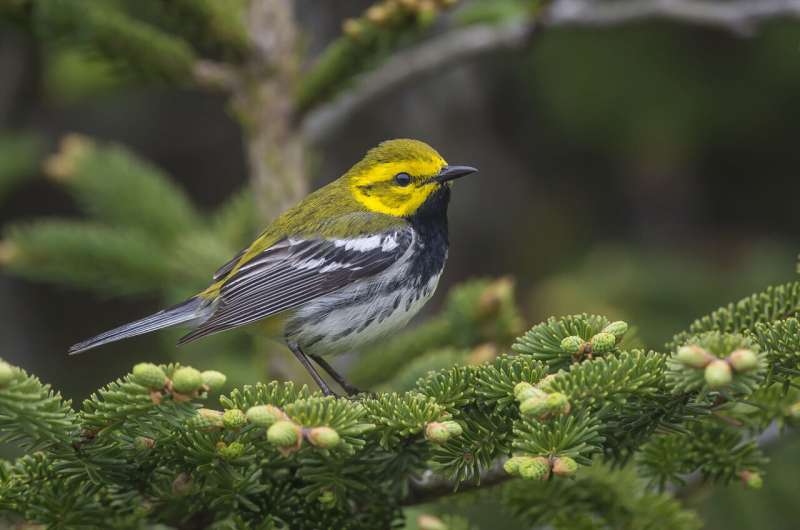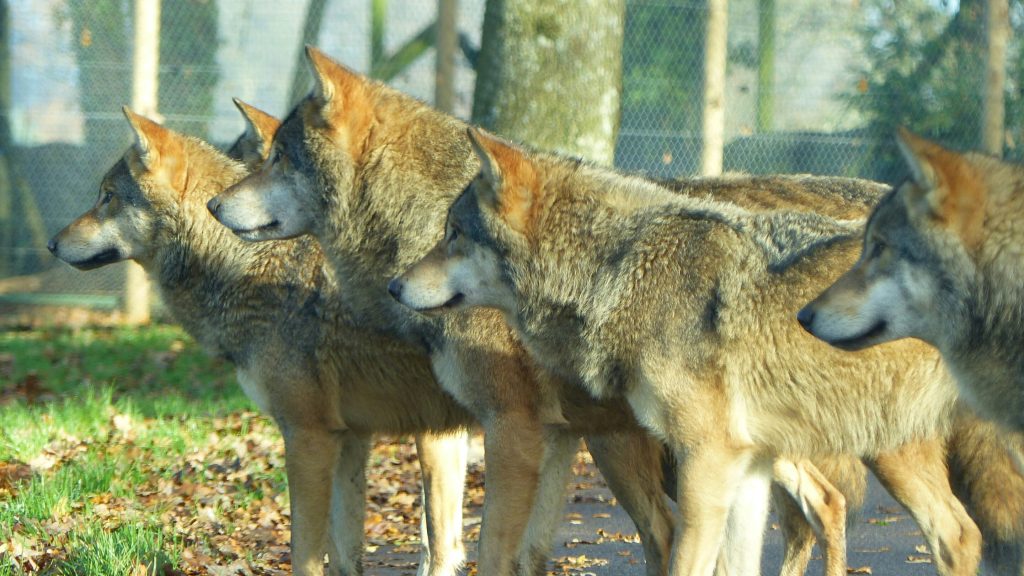
A dispute among birds at a home bird feeder points out the intense competition for resources animals face in nature. However, some similar species seem to live together peacefully. Robert MacArthur’s classic study on songbirds suggested that ecologically similar wood warblers, which are insect-eating, colorful forest songbirds, can coexist in the same trees by occupying slightly different locations in the tree and presumably feeding on different insects.
A new study is now reevaluating MacArthur’s observations using modern techniques, which continue to be referenced in today’s biology textbooks.
An ecological principle states that two species competing for the same resources, such as food or habitat, cannot coexist indefinitely in the same area. One species will eventually outcompete and replace the other.
In his influential 1958 paper, MacArthur described how five wood warbler species living in the same trees, believed to be “ecologically equivalent,” could coexist by foraging in different parts of the same tree. For example, some birds foraged near the trunk, others further out in the branches, while some foraged near the top and others at the bottom of the tree.
“MacArthur proposed a need to reexamine ,” stated David Toews, Louis Martarano Career Development Professor of Biology in the Penn State Eberly College of Science and a paper author.
“We aimed to revisit this concept with current technology, utilizing molecular methods and an unavailable in MacArthur’s era. This enabled us to directly quantify their diet and gain a better understanding of how warblers partition their habitat and how past competition may have influenced the behavior observed today.”
The research team studied 13 wood warbler species coexisting in northeastern New York forests where they breed in the summer. Over 20 years, they observed bird foraging behaviors, collecting information on tree height, foliage density, and distance from the trunk when eating.
“MacArthur’s study implied that if birds forage in different areas of the tree, they eat different things,” Toews explained.
“MacArthur attempted to verify this using data from colleagues who analyzed insect fragments from stomach contents, but the method was biased towards undigested fragments, making identification difficult. Today, we can extract DNA from feces and use fecal meta-barcoding to identify ingested insect species.”
Similar to MacArthur, the researchers found distinct foraging behaviors among bird species.
“A bird’s size and shape are influenced by numerous evolutionary pressures, but many studies, including our own, suggest that foraging behavior is a primary factor,” noted Eliot Miller, BirdsPlus Index Manager at the American Bird Conservancy and paper author.
“The studied birds consumed thousands of arthropod species collectively, showing substantial diet overlap,” Toews mentioned.
“Diet differences were subtle, with closely related species having more similar diets. This indicates MacArthur’s emphasis on diet might have been somewhat misplaced, though the concept of resource partitioning by foraging in different tree areas stands true.”
Toews noted the birds displayed opportunistic foraging habits. Over 75% of samples contained a common insect, the snipefly, while more than half contained an invasive leaf weevil.
“Due to significant foraging behavior differences, we believe competition has influenced how these species forage today and evolved over time,” Miller added.
“Yet, we found little diet variance, meaning other factors may have played a more direct role in warbler evolution. These birds migrate to Central and South America for winter, suggesting resource competition and migration stress may also shape the observed traits today.”
The researchers plan to further explore warbler diet and behavior at their wintering grounds. Additionally, they aim to analyze the nutritional quality of food sources to assess how competition influences this aspect of their diet.
<p”Toews concluded that while MacArthur was accurate in showing that warblers partition habitats in minor ways, the process is more intricate than initially thought.“People commonly observe competitive species interactions at their bird feeders, and studies like this highlight how ancient interactions can shape present-day species,” Toews mentioned.
Besides Toews and Miller, the Penn State research team includes Andrew Wood, a research technologist in Toews’ lab at the time of the research, now an environmental genomics researcher at the University of Minnesota, Duluth, and Marcella Baiz, a postdoctoral researcher in Toews’ lab during the research, now an assistant professor of biological sciences at the University at Buffalo.
The team also comprises of Andreanna Welch at Durham University in the United Kingdom, Robert Fleischer at the Smithsonian’s National Zoo and Conservation Biology Institute, and Adrienne Dale at Texas Tech University.
More information:
Re-assessing niche partitioning in MacArthur’s warblers: foraging behavior, morphology, and diet differentiation in a phylogenetic context, Biology Letters (2025). DOI: 10.1098/rsbl.2025.0001. royalsocietypublishing.org/doi/10.1098/rsbl.2025.0001


